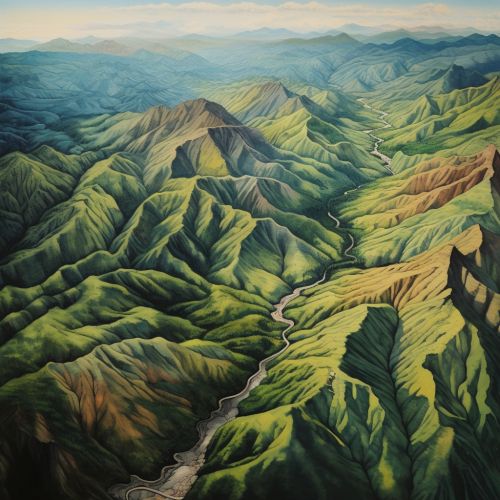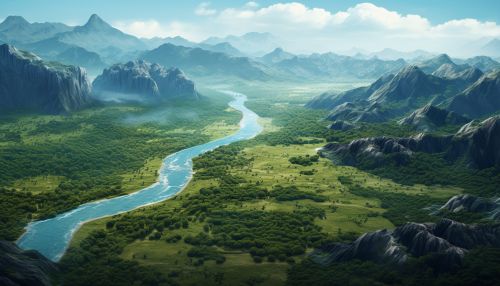Plate Tectonics
Introduction
Plate tectonics is a scientific theory that explains the large-scale movements of Earth's lithosphere. This theory was formulated in the late 1960s and early 1970s on the basis of earlier concepts of continental drift, which was proposed by Alfred Wegener in 1912, and seafloor spreading, a hypothesis proposed by Harry Hess in 1960. Plate tectonics revolutionized the Earth sciences by providing a uniform context for understanding mountain-building processes, volcanoes, and earthquakes as well as the evolution of Earth's surface and reconstructing its past continents and oceans.
The Theory of Plate Tectonics
The theory of plate tectonics is based on a broad synthesis of geologic and geophysical data. It is supported by a wide range of evidence that considers the earth's crust and upper mantle to be composed of several large, thin, relatively rigid plates that move relative to one another. The locations where these plates interact are sites of intense geologic activity, such as earthquakes, volcanoes, and mountain building.
Plate Boundaries
Plate boundaries are the edges where two plates meet. Most geologic activity stems from the interaction of the plates along these boundaries. There are three kinds of plate boundaries: transform boundaries, divergent boundaries, and convergent boundaries.


Transform Boundaries
At transform boundaries, plates slide past one another. This type of boundary results in a fault - a break in the Earth's crust where one block of crust slips relative to another. The best-known example of a transform boundary is the San Andreas Fault in California.
Divergent Boundaries
At divergent boundaries, plates move apart. Most of these are found in oceans, where they form a system of mid-ocean ridges that circle the Earth. The Mid-Atlantic Ridge is a well-studied example of a divergent boundary.
Convergent Boundaries
At convergent boundaries, plates come together. There are three types of convergent boundaries: oceanic-continental convergence, oceanic-oceanic convergence, and continental-continental convergence. Each type of convergence results in a different type of geologic feature. The Himalayas, for example, are the result of continental-continental convergence.
Plate Tectonics and the Earth's Crust
The Earth's crust is broken into a number of plates that float on the semi-fluid layer of the mantle below. These plates are constantly moving, albeit very slowly, at rates of up to a few centimeters per year. This movement is driven by the heat in the Earth's core and mantle, which causes convection currents in the mantle. These currents push and pull the plates in different directions, causing them to collide, pull apart, or scrape against each other.
Plate Tectonics and Geologic Activity
Plate tectonics is a powerful tool for explaining geologic phenomena. Earthquakes, for example, are often caused by the movement of tectonic plates along faults. Similarly, volcanic activity is often concentrated along plate boundaries, where one plate is forced under another in a process called subduction. The heat and pressure caused by this process can melt rock, forming magma that rises to the surface and erupts as a volcano.
Plate Tectonics and Mountain Building
Mountain building, or orogeny, is another process that can be explained by plate tectonics. When two continental plates collide, the crust is pushed up, forming a mountain range. This is how the Himalayas were formed. Similarly, the Andes are the result of the Nazca Plate subducting beneath the South American Plate.
Conclusion
Plate tectonics is a unifying theory that has revolutionized our understanding of the Earth's surface. It provides a framework for explaining a wide range of geologic phenomena, from earthquakes and volcanoes to mountain building and the formation of the Earth's crust. As our understanding of plate tectonics continues to evolve, it will undoubtedly continue to provide valuable insights into the dynamic nature of our planet.
